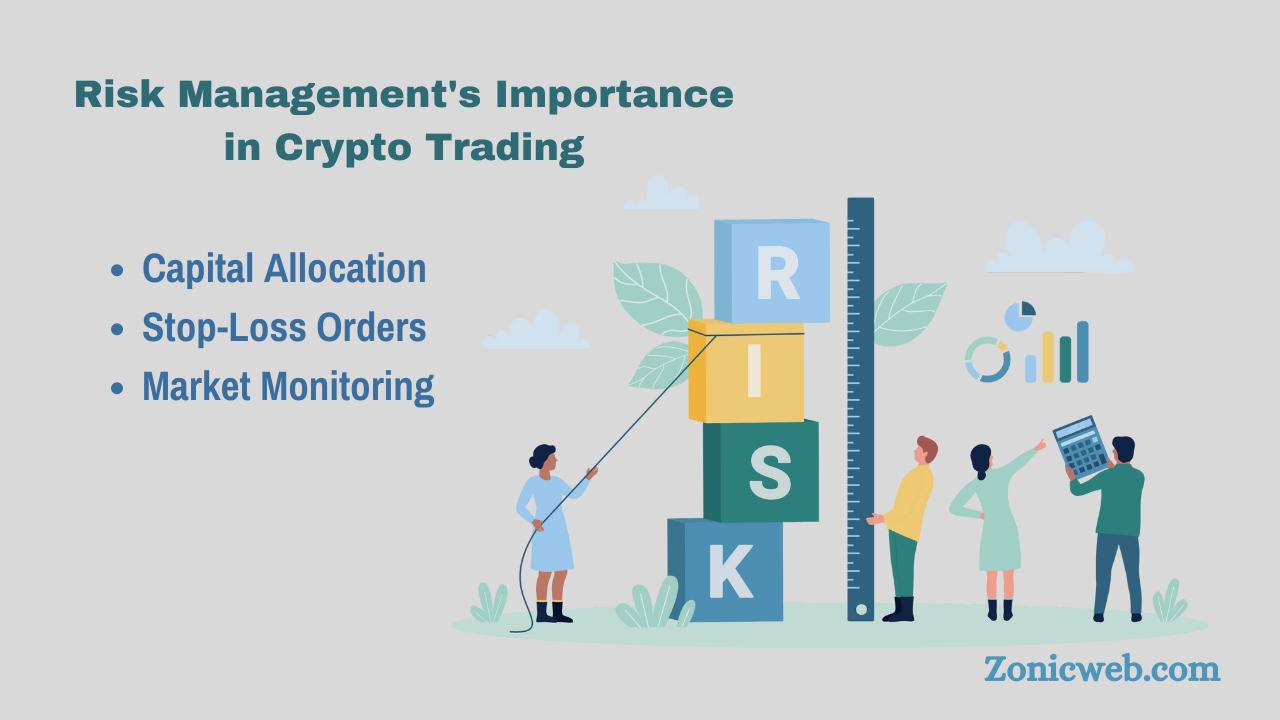Although risk management is an essential component of profitable cryptocurrency trading, novices eager to take advantage of market opportunities frequently overlook it. The price of cryptocurrencies can fluctuate dramatically in a short period of time, which is characteristic of the market. Because of this unpredictability, effective risk management is not only important but also necessary for capital preservation and long-term success.
Choosing the appropriate amount of capital to invest in each trade is one of the fundamental concepts of risk management. A small percentage of your total trading capital, typically between one and three percent, should be risked on each trade, according to many traders. With this strategy, even a string of losses won’t have a big effect on your portfolio as a whole. Traders are able to withstand market fluctuations without jeopardizing their financial stability by adhering to strict risk limits.
Another essential aspect of risk management is the establishment of stop-loss orders. A stop-loss order effectively limits potential losses by automatically selling an asset when it reaches a predetermined price. For instance, if you purchase a cryptocurrency at $100 and place a stop-loss order at $90, your position will be terminated in the event that the price falls below that level, preventing further losses. Because it enables traders to exit positions without having to make an emotional decision, this tool is invaluable in a market with rapid price movements.
Another important risk management strategy is diversification. Instead of putting all of your money into a single asset, you can lessen the impact of poor performance in any one coin by investing in multiple cryptocurrencies. Traders can lessen their exposure to the volatility of individual cryptocurrencies by spreading their investments across a variety of projects and industries. Quantity is not the only factor in diversification; It is essential to select assets whose price movements are not correlated with one another.
Another important part of managing risks well is keeping an eye on the market. Trading decisions can benefit from having a better understanding of market sentiment, regulatory developments, and broader economic trends. For instance, critical news occasions can set off unexpected cost developments, making it fundamental for stay informed. Traders can make proactive adjustments to their risk management strategies with the assistance of being aware of these external factors.
Managing one’s emotions is an essential part of risk management, and psychological factors play a significant role in trading. Impulsive actions that deviate from a well-thought-out trading strategy can be the result of greed and fear. Emotional influence can be reduced by trading in a disciplined manner and adhering to predetermined strategies. Emotional responses can also be tracked and strategies can be improved over time with the help of a trading journal.
It is also essential to regularly evaluate and adjust your risk management strategies. The market for cryptocurrencies is always changing, so what works today might not work tomorrow. You can better adapt to changing environments by periodically reevaluating your risk tolerance, trading strategy, and market conditions. Traders are able to improve their strategies and make well-informed decisions based on the realities of the current market thanks to this proactive approach.
In conclusion, effective crypto trading relies heavily on risk management. Traders can better navigate the inherent risks of the cryptocurrency market by determining capital allocation, setting stop-loss orders, diversifying investments, monitoring market conditions, managing psychological factors, and regularly reviewing strategies. The importance of risk management not only safeguards your capital but also lays the groundwork for long-term trading success in a dynamic environment.
